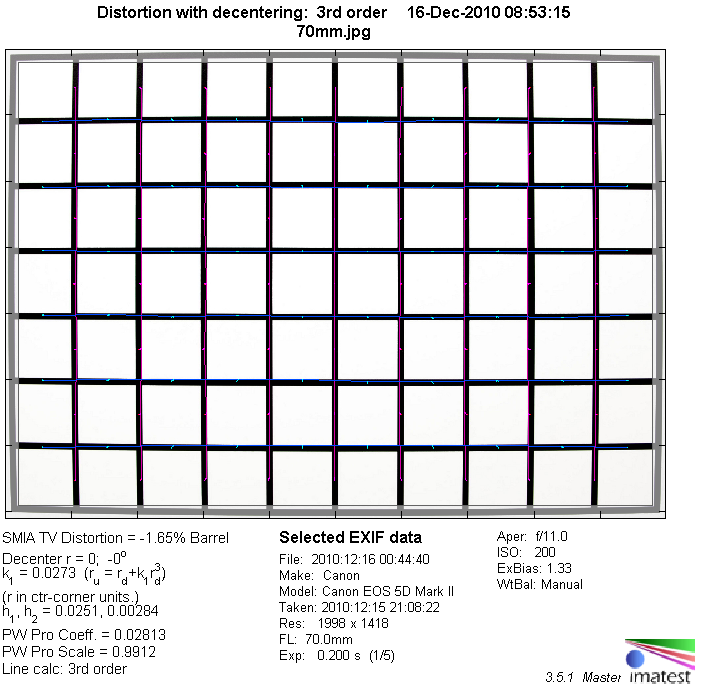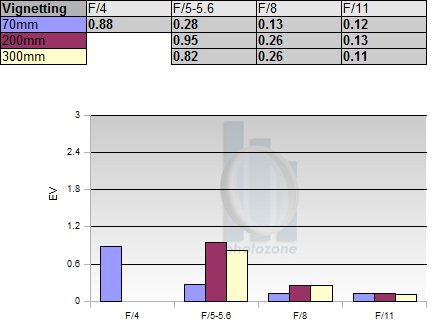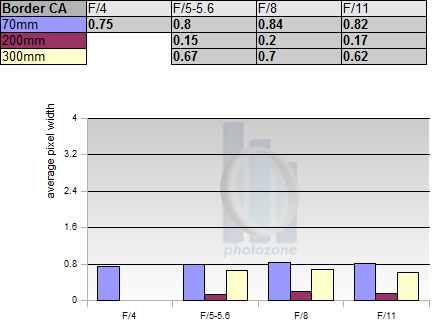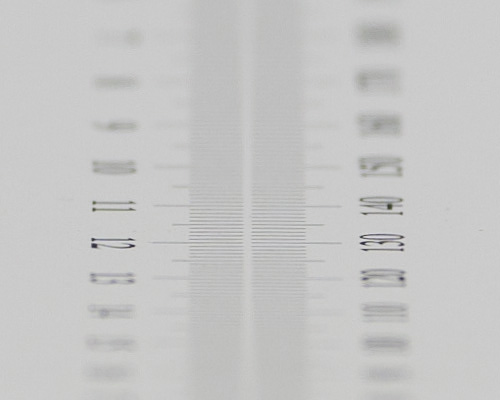|
Canon EF 70-300mm f/4-5.6 USM L IS - Full Format Review / Test Report - Analysis |
|
Lens Reviews -
Canon EOS (Full Format)
|
|
Page 2 of 3

Distortion
The Canon EF 70-300mm L IS shows moderate barrel distortion at 70mm and moderate pincushion distortion towards the long end. This is about average for a lens in this class.
|
Move the mouse cursor over the focal length text marks below to observe the respective distortion
|
| 70mm |
200mm |
300mm |

|
Vignetting
Vignetting is well controlled at less than 1EV at max. aperture which is slightly better than average for a tele zoom lens. The comparatively large front element helps a bit here probably. Closing the aperture by 1 f-stop solves most of the issue from a real-life perspective.

MTF (resolution)
The resolution characteristic of the EF 70-300mm L IS is on a high level but varies somewhat across its zoom range.
At 70mm it is capable of delivering very good to excellent results across the image frame and that's straight from f/4.
The peak performance is reached at f/5.6 at this focal length. There's a drop in quality at 200mm/300mm but the center
is still very good to excellent and the borders/corners manage to stay on a very good level (albeit "just" at max.
aperture). A differentiator is the high level of contrast even at 300mm f/5.6.
The field curvature is minimal. The centering quality of the tested sample was excellent.
Some users may be have hoped for a little more here but the lens only features 2 UD elements whereas the
EF 70-200mm f/4 USM L IS uses an extra CaF2 element on top.
Please note that the MTF results are not directly comparable across the different systems!
Below is a simplified summary of the formal findings. The chart shows line widths per picture height (LW/PH) which can be taken as a measure for sharpness.
If you want to know more about the MTF50 figures you may check out the corresponding Imatest Explanations
Chromatic Aberrations
The lens produced a varying but low degree of chromatic aberrations (color shadows at harsh contrast transitions) at the image borders. The average CA pixel width remains well below 1 pixel throughout the range and it's especially low at 200mm. Such low CAs contribute to a high subjective sharpness perception.

Bokeh
Normally we don't really analyze the bokeh of "slow" speed lenses but we're making an exception to the rule here because of the high end nature of the Canon 70-300mm L IS.
The out-of-focus blur in the critical focus transition zone is smooth in the background. The foreground blur is still good albeit slightly more nervous. During our field trip with the lens we've seen a few images with with a less than perfect bokeh but these were taken in complex situations - the difficult focus transition zone is simply broader compared to faster lenses which have a natural advantage here.
Out-of-focus highlights are perfectly rendered near the image center. The discs have a circular shape with no outlining and a smooth inner portion.
 The situation changes a bit when moving towards the borders and corners. Due to a vignetting effect the circular disc shapes deteriorates to "cat's eyes".
Stopping down helps to recover the circular shape but you need to stop down to f/11 to solve most of the issue.
The situation changes a bit when moving towards the borders and corners. Due to a vignetting effect the circular disc shapes deteriorates to "cat's eyes".
Stopping down helps to recover the circular shape but you need to stop down to f/11 to solve most of the issue.

Bokeh Fringing / Longitudinal Chromatic Aberrations (LoCA)
Bokeh fringing (LoCAs) is generally no issue on a slow speed lens. There're neither green nor magenta halos in the out-of-focus
zones - see the following image portion taken at 200mm f/5.

|